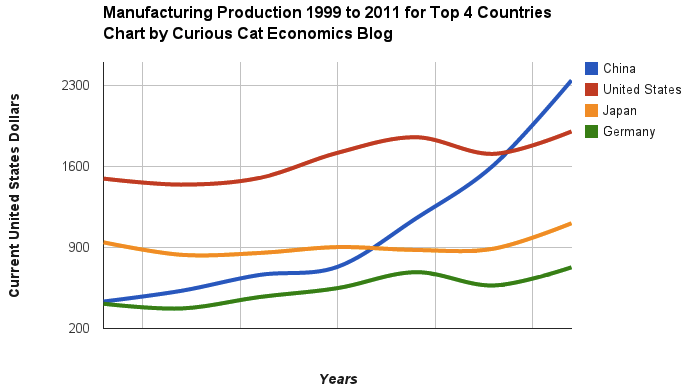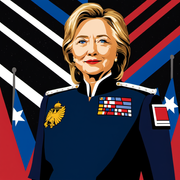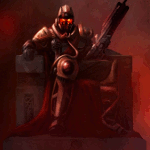|
Member of the Imperial Guard photographed in 1858: Not sure if he was in the old Guard.
|
|
|
|

|
| # ? Jun 8, 2024 08:35 |
|
Jobbo_Fett posted:Some details I just can't add, but I'm trying to get anything particularly relevant. How do you mean? Illustrator is flexible, if you have trouble feel free to ask.
|
|
|
|
That guy could have been, understandibly at the time those photographs were taken a lot of the old 1st Empire uniform stuff was long out of production so the Photographer had to improvise and kitbash with the more recent 2nd Empire uniform and gear. Those old soldiers still look bad rear end.
|
|
|
|
|
Tevery Best posted:So I've been playing Napoleon Total War recently, and a question came to mind. Did different calibres of field guns serve different purposes in the field in that period? As in, in the game, you have 6 iber, 8 iber and 12 iber guns, but the former are little more than an option for "until you get to the good stuff". Were smaller cannons fielded for any particular reason, or more or less with the same principle in mind as lovely tanks are nowadays? Smaller canon are a lot easier to make than larger ones. Even a 6lb gun could weigh in at 800lbs or more of cast bronze (more if iron) without even going into the stresses involved in firing heavier shot. It's not a trivial engineering problem with canon barrels having to be supplemented with iron or steel rings and casings or shaped so as to distribute pressure optimally/equally. How many places could there be, even in such a modern and industrialized nation as 18th century France capable of doing that kind of work much less of the big guns weighing in at 1000's of lbs? A 1732 canon de 12 bronze gun weighed close to 4000lbs! So, you have issues of mobility, moving an 800lb guns is much easier than moving a 4000lb gun, not to mention the heavier ammo and more powder. Now try getting that 4000lb gun down a muddy track and up a hill in a reasonable time period. The you also have difficulty, cost and rate of manufacture and rarity of material. Larger crews, more horses, more robust supply chain to maintain the bigger gun with larger crews and more horses and etc... Really, for most units it's the difference between having a gun and not having one at all. Even a 3lb gun could be a difference maker on a battlefield. Also, I am kind of curious as to what you think the rational is for having 'lovely tanks' is today? I don't think anyone has ever intentionally made a lovely tank, although many have turned out to be lovely in retrospect. Or, do you just mean 'low cost'?
|
|
|
|
How much were guns parceled out in the Napoleonic period? Did they drag the smaller pieces around for close support and make a battery with the big stuff or something else?
|
|
|
|
One interesting thing to considered in medieval warfare is that for a long time nothing was standardised. I think the French were the first to standardise their artillery in the 17th century. All the various kinds of requirements for transport and ammunition must have driven people mad.
|
|
|
|
Riso posted:One interesting thing to considered in medieval warfare is that for a long time nothing was standardised. I think the French were the first to standardise their artillery in the 17th century. And also, with guns being in such short supply, the Napoleonic armies were not shy of using captured pieces.
|
|
|
|
Pornographic Memory posted:And also, with guns being in such short supply, the Napoleonic armies were not shy of using captured pieces. I think cavalry had to carry around nails to make artillery pieces useless they could not take.
|
|
|
|
Murgos posted:Also, I am kind of curious as to what you think the rational is for having 'lovely tanks' is today? I don't think anyone has ever intentionally made a lovely tank, although many have turned out to be lovely in retrospect. Or, do you just mean 'low cost'? I meant it as a mental shortcut to "this thing is 50 years old and cannot hope to match any modern armour" - and yes, by the rationale I meant "old, bad tank is better than no tanks at all".
|
|
|
|
Murgos posted:Also, I am kind of curious as to what you think the rational is for having 'lovely tanks' is today? I don't think anyone has ever intentionally made a lovely tank, although many have turned out to be lovely in retrospect. Or, do you just mean 'low cost'? quote:Really, for most units it's the difference between having a ETA: ^^ Apparently that was it. ^^
|
|
|
|
xthetenth posted:How much were guns parceled out in the Napoleonic period? Did they drag the smaller pieces around for close support and make a battery with the big stuff or something else? For all of the European armies I'm aware of, artillery was formed into a regiment under the army it was serving, and then divided into batteries. Batteries were then attached to specific divisions, with the army or corps commander retaining an artillery reserve as he saw fit. Often this mean that the lighter foot pieces went with the divisions, while the heavier pieces were retained in the reserve for counterfire or reinforcing fires.
|
|
|
|
Murgos posted:Smaller canon are a lot easier to make than larger ones. Even a 6lb gun could weigh in at 800lbs or more of cast bronze (more if iron) without even going into the stresses involved in firing heavier shot. It's not a trivial engineering problem with canon barrels having to be supplemented with iron or steel rings and casings or shaped so as to distribute pressure optimally/equally. How many places could there be, even in such a modern and industrialized nation as 18th century France capable of doing that kind of work much less of the big guns weighing in at 1000's of lbs? A 1732 canon de 12 bronze gun weighed close to 4000lbs! Hegel and me stood next to one of the large french guns last summer, some of them had marks on them where balls hit. If you've never seen them, they look huge.
|
|
|
|
Raenir Salazar posted:I'm partial to this theory because Russia today seems to be deindustrializing. Mmm. The West deindustrialised in the 1980s, pretty much. The current centre of world industry is China; it's not surprising that Russia would do exactly what we did now that it's a capitalist country on the world market.
|
|
|
|
feedmegin posted:Mmm. The West deindustrialised in the 1980s, pretty much. The current centre of world industry is China; it's not surprising that Russia would do exactly what we did now that it's a capitalist country on the world market. Wasn't it mostly the UK and USA that let their manufacturing industry go the way of the dodo? Manufacturing in Europe's still big but the heavy automatisation today means it is not the great job provider it used to be. China mostly got out of the 19th century and thanks to its huge resources and manpower took over.
|
|
|
|
darthbob88 posted:I'm pretty sure it's Eg. in 1944 Finland used artillery pieces that were made in 1877:  107 K/77 piirk "Ten guns were used during Winter War. Four of them were used in Carelian Isthmus by Heavy Artillery Battalion 3, which after breakthrough in Summa had to leave two of the guns to Soviets (later during Continuation War one of the two lost guns was captured back). Four guns were used in Coastal Defence of Lake Ladoga and another two guns saw use with tractor-towed artillery section in northern shore of Lake Ladoga. During Interim Peace between Winter War and Continuation War 20 guns were issued to Fortification Artillery Battalion 5 in Salpa-line." That captured gun had quite a history. Imperial Russia -> Finland -> Soviet Union -> Finland  152 mm cannon model 1877 http://en.wikipedia.org/wiki/6-inch_siege_gun_M1877 "During Winter War 12 guns were used by Heavy Artillery Battalion 5. Later during Continuation War they saw some use with Syväri Fortification Artillery Battalion 1. When Finnish troops retreated from river Syväri/Svir the Fortification Artillery in June of 1944 Battalion still had 23 of these guns. As the guns were so worn-out, outdated and difficult to transport Finnish troops left them behind. Finnish military found these old guns to be accurate and their projectiles powerful, but transporting guns this heavy proved problematic." From: http://www.jaegerplatoon.net/ARTILLERY1.htm
|
|
|
|
xthetenth posted:How much were guns parceled out in the Napoleonic period? Did they drag the smaller pieces around for close support and make a battery with the big stuff or something else? Some regiments/battalions had smaller 2-4 pounder guns for support, although by the end of the Napoleonic Wars, this practice was not especially common in most armies.
|
|
|
|
feedmegin posted:Mmm. The West deindustrialised in the 1980s, pretty much. The current centre of world industry is China; it's not surprising that Russia would do exactly what we did now that it's a capitalist country on the world market. The US is still #2 in the world in manufacturing, having been passed by China just a couple years ago. The US has not de-industrialized in the least. There has been a sharp reduction in manufacturing jobs, due to increased automation. People seem to assume that means output has fallen as well, but it continues to grow strongly. China's forte is small, light items that are cost-efficient to ship around the world. Heavy, expensive products are generally cheaper to make domestically. Edit: Now, with graphs! 
Deteriorata fucked around with this message at 20:20 on Apr 21, 2015 |
|
|
|
Mechanisation and technology are so good that the amount of labour and space you need to manufacture the same amount of stuff as in 1900, or 1950 is pretty absurd as well. Britain had around half of world steel and textile production in the 1850's and those volumes are comically easy to produce for a modern state now comparatively.
|
|
|
|
|
Deteriorata posted:
Wow. I knew the Eurozone was struggling, but I didn't expect that even Europe's Teutonic overlords would have that sort of dip. Getting back on topic, I know that modern car factories can't easily convert to tank factories like in WWII. But what would a war economy look like today if two major powers got into a prolonged, conventional conflict? IE, how would a Call of Duty economy function?
|
|
|
|
We'd have to use nukes built in the 70's until we could retool our reactors and build updated nukes.
|
|
|
|
golden bubble posted:Wow. I knew the Eurozone was struggling, but I didn't expect that even Europe's Teutonic overlords would have that sort of dip. If one of those major powers is the United States, the other major power is hosed because their heavy output, ammunition output, and current military size is untouchable. For the sake of argument, let's say Russia gets into a non-nuclear slugfest with China. China's industrial output has been growing for decades, and they'll do all they can to turn Happy Meal and electronics factories into militarily useful functions. They do have a substantial number of heavy industrial output, and they will retool that as much as they can to start making tanks - although it'll be a slow process because their factories aren't designed for that kind of retool, and their military planners will have many unpleasant surprises with factories that aren't up to code. Meanwhile, Russia has had declining industrial output for decades. They'll pull millions of weapons and vehicles out of storage, and find that only a fraction work with another fraction taking weeks to return to working condition. Russia would have to lean on crates of fifty-year-old ammunition to keep themselves supplied, and trying to pay for more output would collapse Russia's economy. Because of nuclear weapons, major powers no longer plan to get into prolonged conventional conflicts. This means that unlike before World War I, the balance of conventional power isn't remotely close to even, and the major powers have clear ranks of economic power. America beats China, China beats Russia, America beats China and Russia combined without even asking NATO for help. Note that this is all in conventional terms, the aggressor would fail its strategic objectives because of insurgency. And the whole scenario is implausible, because one major power invading another means nukes fly.
|
|
|
|
golden bubble posted:Getting back on topic, I know that modern car factories can't easily convert to tank factories like in WWII. Perhaps you mean Soviet tractor factories, plain car factories never were easily converted to tank production but caterpillars weren't too far.
|
|
|
|
golden bubble posted:Wow. I knew the Eurozone was struggling, but I didn't expect that even Europe's Teutonic overlords would have that sort of dip. The graph ends in 2010. Here's one that ends in 2011: 
|
|
|
|
Koramei posted:How do you mean? Illustrator is flexible, if you have trouble feel free to ask. What I mean is that some of the symbols, characters or details are obscured by whatever scanner/printer's output in my book. Take this image for example:  I can't replicate the "Date Projectile Filled" (The 1*_10 marking on the projectile on the right) because the number is missin and I wouldn't be able to say for certain if the first number is a month, day or year. The symbol directly beneath that number is also incomprehensible. Illustrator itself is pretty robust, even if I'm only using CS2, and it's certainly not the programs limitations, it's entirely the low quality of my source material. I'll probably try looking around online to see if maybe a better copy exists so I can fill in those small details but for now it's not that big a deal. I can always update and add content to existing posts.
|
|
|
|
Nenonen posted:Perhaps you mean Soviet tractor factories, plain car factories never were easily converted to tank production but caterpillars weren't too far. GAZ made tanks during the war. The whole point of the T-60 was a tank that could be built at even a car factory.
|
|
|
|
Chamale posted:They'll pull millions of weapons and vehicles out of storage, and find that only a fraction work with another fraction taking weeks to return to working condition. Russia would have to lean on crates of fifty-year-old ammunition to keep themselves supplied, and trying to pay for more output would collapse Russia's economy. Just as an aside (I don't really disagree with anything substantial in what you said) you're probably slightly underestimating the usefullness of those old stockpiles. 50 year old ammunition still goes bang and in the case of small arms it's (for the most part*) just as good now as it was back then. Maybe you don't want to issue it to your squad's designated marksman, but for your average infantryman it'll do the job. Things get a bit touchier when you start talking various forms of HE, but even then a few decades sitting on a shelf isn't the end of the world. By way of an example, the US unloaded a poo poo ton of Vietnam-era dumb bombs on Iraq in Gulf War 1 and they (mostly) still went boom. As for only a fraction working, you'd be surprised how long a gun or even a vehicle can sit in mothballs and still work. I've personally cleaned 60+ year old preservative grease off of old Soviet rifles and had them shooting the same day. Now, does the modern Russian army want to be handing out SKSs from the 50s? No, but in our theoretical land war in Asia if it came to that the guns would still work. As for more complex things like tanks, planes, etc. a bunch of Ukranians famously pulled some WW2 era vehicle off a pedestal in a park a few months ago, replaced a bunch of engine seals, and got it working - and that's a vehicle that had exactly 0 effort put into preserving it and was left in the elements for half a century. I'm sure the vehicles in some of the larger obsolete vehicle parks they've got in the nice arid parts of south-central Russia are in much better condition. Again, we're talking driving a T55 or whatever into a modern battlefield which is pretty loving far from ideal, but it's not the "fraction of a fraction of a fraction" situation you seemed to be describing. If there's one thing the Soviet army was good at it was slathering enough cosmolene on something to make it survive in a warehouse for 60 years. edit: a lot of this is exactly why the UN is so keen on destroying small arms stockpiles. * there are some concerns with degradation of the powder over time releasing chemicals that weaken the brass or steel cases, some issues with the "corrosive" nature of the primer compounds used in Warsaw Pact nations before the 1990s, and modern production ammo is usually a bit more accurate due to improved QC and improved manufacturing processes. That said, this is mostly stuff that - as much as it annoys modern recreational shooters - frankly doesn't matter when you're trying to supply an army with small arms ammo. Every awful 3rd world conflict from Africa to Syria has run on cold-war era (or older) surplus ammo since the 90s, and in the places where the Soviets were actively supplying combatants much earlier. A lot of the VC in vietnam were armed with WW2/very early Cold War-era Soviet poo poo. Cyrano4747 fucked around with this message at 21:44 on Apr 21, 2015 |
|
|
|
Both Volvo and Scania manufactured tanks during the war in Sweden as well, and AFAIK neither had pre-war experience with caterpillar drives. Scania even tried to improve the Czech TNH that they were producing on license, although with limited success. Still, we're only talking a few hundred tanks each here, nowhere near the huge series made in any of the fighting countries. In other news, re: the classified documents discussion from a few pages back, today I found out that there is a classification level that sounds really silly when you describe it, because it is so secret that the very existence of the classification level itself is classified. Or at least it used to be; its existence was officially revealed in 2011, but the regulations that govern it are still classified (I hesitate to call it a law, even though I'm pretty sure it technically is one). It seems to be almost exclusively used for military intelligence.
|
|
|
|
sullat posted:The Persian route was important enough that the Brits and Russians felt compelled to coup the shah when he threatened it. A common misunderstanding, and fully justified, since pretty much no one has done research in this area since the 80s. But the Brits really did fear some sort of Nazi coup was about to develop in the area and place a pro-Axis government in control of the Iran's oil and communications. Lend-Lease concerns came very shortly after, so closely that it seems to be the real reason the invasion happened. But when the invasion was being planned (July and early August), British assumptions were that the Soviets were toast. Xotl fucked around with this message at 23:46 on Apr 21, 2015 |
|
|
|
Riso posted:One interesting thing to considered in medieval warfare is that for a long time nothing was standardised. I think the French were the first to standardise their artillery in the 17th century. The Hussites had fully standardized firearms
|
|
|
|
golden bubble posted:Getting back on topic, I know that modern car factories can't easily convert to tank factories like in WWII. But what would a war economy look like today if two major powers got into a prolonged, conventional conflict? IE, how would a Call of Duty economy function?
|
|
|
|
JaucheCharly posted:Hegel and me stood next to one of the large french guns last summer, some of them had marks on them where balls hit. If you've never seen them, they look huge.
|
|
|
|
Rent-A-Cop posted:A prolonged conventional conflict between major powers really isn't a thing any more. Like Chamale said, we should start by assuming the US isn't involved because that throws any concept of parity right out the window. So let's assume two hypothetical nations with NATO-equivalent militaries. The conflict would come down to who has jets still flying at the end of the first week. Air superiority means your enemy has to go everywhere under cover of his SAM systems and anything that isn't protected dies almost immediately. Unless both hypothetical combatants have a ludicrous number of advanced SAMs this means that whoever has air superiority gets to bomb the other guy pretty much at will. For a picture of what that means if things get real nasty, imagine a bombing campaign ala WW2 conducted with modern weapons against civilian targets. It'd make what happened to Dresden and Tokyo look tame in comparison.
|
|
|
|
Rent-A-Cop posted:A prolonged conventional conflict between major powers really isn't a thing any more. Like Chamale said, we should start by assuming the US isn't involved because that throws any concept of parity right out the window. So let's assume two hypothetical nations with NATO-equivalent militaries. The conflict would come down to who has jets still flying at the end of the first week. Air superiority means your enemy has to go everywhere under cover of his SAM systems and anything that isn't protected dies almost immediately. Unless both hypothetical combatants have a ludicrous number of advanced SAMs this means that whoever has air superiority gets to bomb the other guy pretty much at will. For a picture of what that means if things get real nasty, imagine a bombing campaign ala WW2 conducted with modern weapons against civilian targets. It'd make what happened to Dresden and Tokyo look tame in comparison. Which countries other than USA has enough bombs for that kind of campaign? Even Britain and France ran out of bombs quite fast in Libya. edit: ^^^^^ ha
|
|
|
|
Cyrano4747 posted:
Isn't most Russian equipment built with a ridiculous tolerance for punishment, both from the environment and anything its own operators might dish out?
|
|
|
HEY GAL posted:And those were field pieces, not the big citykillers I love the look of those 17th century field pieces by the way.
|
|
|
|
|
SeanBeansShako posted:I love the look of those 17th century field pieces by the way.
|
|
|
|
Hm.
|
|
|
Klaus88 posted:Isn't most Russian equipment built with a ridiculous tolerance for punishment, both from the environment and anything its own operators might dish out? From my experience with it, it's generally built to be usable by a predominately conscript army (in the past, a conscript peasant army). This means that it tends to be very simple, which often goes hand-in-hand with durability. The Kalashnikov is indeed very simple in its construction and can be made cheaply from easily available materials by third world nations, but part of the simplicity of construction also includes the loose tolerances and low number of parts that lead to better resistance to dirt and grime. The Makarov pistol does clever things like extend the mainspring down through the grip and be shaped so it locks the magazine, with the bottom sticking out of the grip to act as the magazine release, and the slide stop also acts as the ejector. For their military gear, it's very hard-wearing and inexpensive. Cold War-era magazine pouches (I have two Romanian and one East German and I'm planning to get a Russian one) close with just a leather strap and brass stud, the same fashion used before World War II, and are made of heavy canvas with rough but usable stitching. The canteen is aluminum rather than plastic, with the added benefit of being very tough against damage and able to be safely warmed over a fire (these canteens are actually still in use with the Russian and other Eastern European forces, despite dating back to before the 1940s). However, a big part of keeping Soviet equipment preserved is cosmoline. This is that sticky, earwax-looking petroluem-based preservative that's liberally slathered all over surplus stuff. Cosmoline preserves items like vehicles and guns so well that they practically get frozen in time, free from oxidation. It's a bitch getting all the cosmoline out of your Mosin or SKS (there's no way to really remove 100% of it even after detail stripping it and boiling all the parts or leaving them to bake in the sun until the goop melts out), but it lets a rifle that was made in the 1950s be brought out of the box looking almost factory fresh.
|
|
|
|
|
So how long will modern small arms and ammo last in storage?
|
|
|
|

|
| # ? Jun 8, 2024 08:35 |
|
I'm not sure there is an upper limit to a modern small armed packed properly. A gun packed in Cosmoline is going to be a gun packed in Cosmoline until you scrub all the stuff off, what's going to degrade?
|
|
|






































 Yes, it's like a lava lamp.
Yes, it's like a lava lamp.




